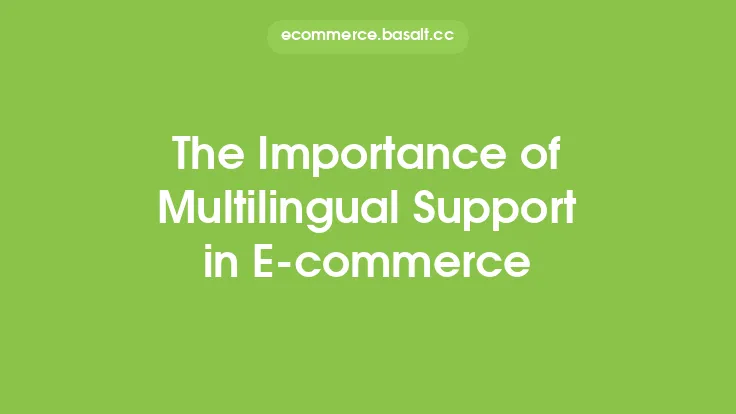In today's digital age, having a website is crucial for businesses looking to expand their reach and tap into the global market. However, simply having a website is not enough; it needs to be tailored to cater to the diverse needs and preferences of customers from different regions and cultures. This is where website localization comes into play. Website localization is the process of adapting a website to meet the linguistic, cultural, and technical requirements of a specific region or market. It involves translating the content, modifying the design and layout, and ensuring that the website is compatible with the local infrastructure and regulations.
Benefits of Website Localization
Website localization offers numerous benefits to businesses looking to expand their global presence. For one, it helps to increase customer engagement and conversion rates. When customers can navigate a website in their native language and find content that is relevant to their culture and interests, they are more likely to stay on the site and make a purchase. Additionally, website localization can help businesses to build trust and credibility with their target audience. By showing that they have taken the time to understand and cater to the local market, businesses can demonstrate their commitment to providing a high-quality customer experience.
Key Elements of Website Localization
There are several key elements to consider when localizing a website. First and foremost, language is a critical factor. The website should be translated into the local language, and the translation should be accurate and culturally relevant. This includes not only the content but also the metadata, such as titles, descriptions, and keywords. Another important aspect is the design and layout of the website. The website should be adapted to accommodate the local preferences and norms, such as the use of colors, images, and fonts. Furthermore, the website should be optimized for local search engines and should comply with local regulations and standards.
Technical Considerations
From a technical perspective, website localization requires careful planning and execution. The website should be designed to handle multiple languages and character sets, and the content management system should be able to support the localization process. Additionally, the website should be optimized for local search engines, which may have different algorithms and ranking factors than global search engines. The website should also be compatible with local infrastructure, such as payment gateways and shipping providers. Moreover, the website should be secure and compliant with local data protection regulations, such as the General Data Protection Regulation (GDPR) in the European Union.
Cultural Adaptation
Cultural adaptation is a critical aspect of website localization. The website should be adapted to accommodate the local culture and customs, including the use of images, colors, and symbols. For example, in some cultures, certain colors or images may have different meanings or connotations, and the website should be designed to avoid any cultural insensitivities. Additionally, the website should be adapted to accommodate local preferences and norms, such as the use of formal or informal language, and the level of directness or indirectness in communication.
Best Practices
To ensure successful website localization, there are several best practices to follow. First, it is essential to conduct thorough market research to understand the local market and its requirements. This includes researching the local culture, language, and customs, as well as the competitive landscape and market trends. Second, it is crucial to work with local experts, such as translators, designers, and developers, who have a deep understanding of the local market and its requirements. Third, the website should be tested and validated with local users to ensure that it meets their needs and expectations. Finally, the website should be regularly updated and maintained to ensure that it remains relevant and effective in the local market.
Common Challenges
Despite the importance of website localization, there are several common challenges that businesses may face. One of the biggest challenges is the complexity of the localization process, which can be time-consuming and resource-intensive. Another challenge is the cost of localization, which can be significant, especially for small and medium-sized businesses. Additionally, there may be technical challenges, such as ensuring compatibility with local infrastructure and regulations, and cultural challenges, such as adapting to local customs and norms. Moreover, there may be challenges related to measuring the effectiveness of the localization efforts and justifying the return on investment.
Conclusion
In conclusion, website localization is a critical aspect of global e-commerce, and it offers numerous benefits to businesses looking to expand their global presence. By adapting a website to meet the linguistic, cultural, and technical requirements of a specific region or market, businesses can increase customer engagement and conversion rates, build trust and credibility with their target audience, and gain a competitive advantage in the local market. While there are several challenges associated with website localization, the benefits far outweigh the costs, and businesses that invest in localization are likely to see a significant return on investment. As the global e-commerce market continues to grow and evolve, website localization will become increasingly important, and businesses that fail to adapt may risk being left behind.





